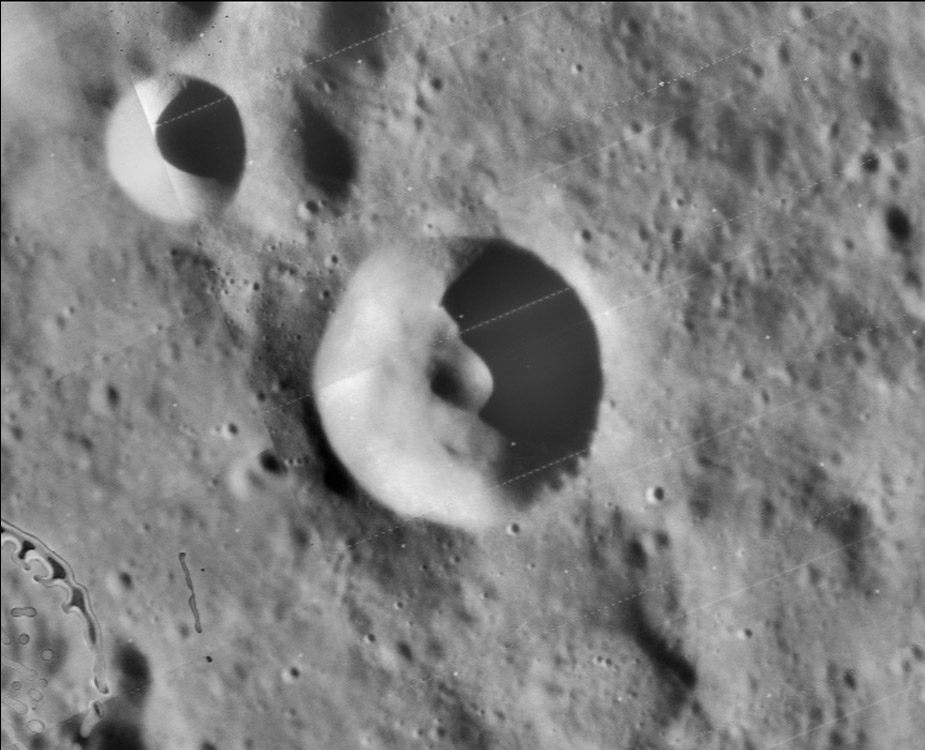March 12, 2018
Hemispherical Peak
Originally published October 15, 2008

image from Lunar Orbiter IV by way of Map-A-Planet
In looking at images for yesterday's LPOD I came across this crater with a strange rounded central peak. Lockyer G is a 24 km wide crater just west of Lockyer. Normal craters of this size have the complex morphology like Autolycus or Triesnecker. These are transitional structures to large complex craters like Tycho where the inner wall collapses as a series of floor-girdling terraces and there is a broad flat floor with a rugged central peak. For craters 20-45 km wide the individual parts of the wall slump down and often a small peak is surrounded by mounds of material that slide down the walls. Lockyer G does have these mounds, but instead of a small hill for a central peak it has a broad and somewhat hemispherical central ediface. It looks like a marble in the bottom of a small bowl. The Moon's most famouns rounded peak is Alpetragius. No one has speculated very much about why peaks look this way but considering that central peaks are rebounds of the crust following its compression by an impact, it might seem that a hemispherical rebound would be expected. The peak in Alpetragius has a diameter of about 28% of the crater diameter, but Lockyer G's peak is only about 18%. Does this mean they have different explanations? No - it's just a measurable difference that quantifies that the two craters aren't identical, but we aren't the wiser!
Chuck Wood
Technical Details
Related Links
Rükl plate 67
Yesterday's LPOD: Third Discovery
Tomorrow's LPOD: A Bump in the Day
COMMENTS?
Register, Log in, and join in the comments.



